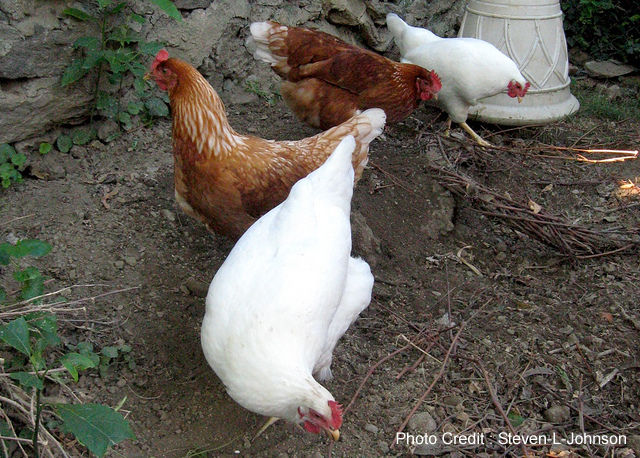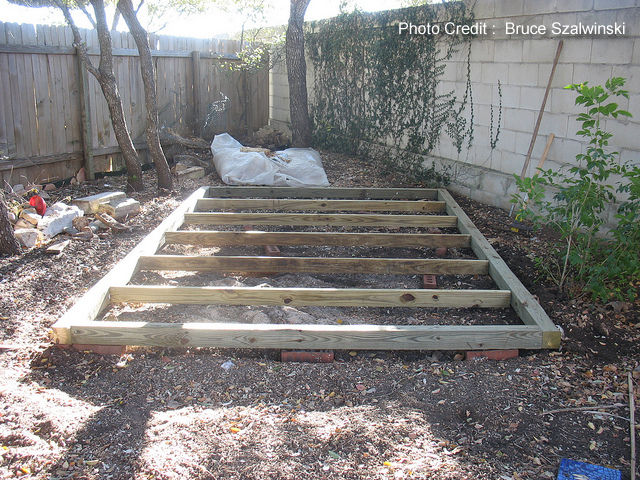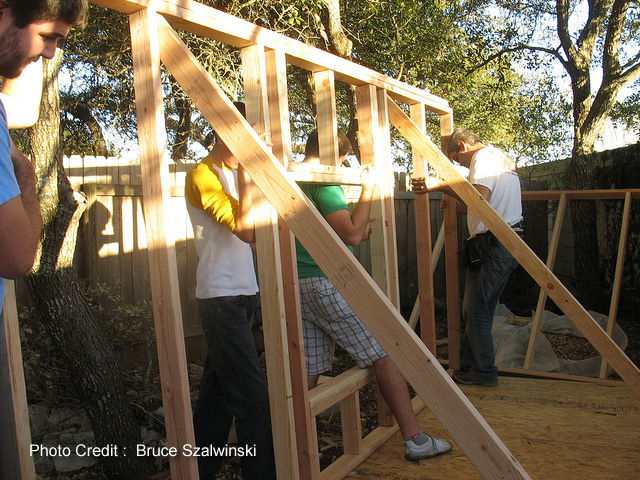As far as backyard projects go building a place for your chickens to live in has to be up there as one of the most important. Your flock won’t have many demands in terms of beauty (although you might) but they do need it to be big enough, secure and habitable (dry, damp free and with ample ventilation).
Their space requirements inside the coop are between 2 and 4 square feet each minimum – depending on the breed and size of your chicken. If they are going to be living inside a lot of the time then erring on the higher side of things would probably be best as cramped ‘cooped up’ chickens will turn on each other. If they will be out and about in a secure pen or free ranging for most of their day then the space inside will not be as important as they will only be using it to roost and to lay eggs.

Before you even get your chicks it is probably wise to check that you will be allowed to keep them; some areas don’t allow chickens, others do, but only pullets and hens (a rooster may be persona no grata) and others may allow them but only a certain number etc. etc. Also, there may be rules about where to place the building and its size. A large (or even small) coop appearing in your garden may be upsetting to your neighbours and if you have inadvertedly broken any of your local rules and regulations you will be leaving yourself open to someone making a complaint and you being forced to tear it down again.
1. You begin by choosing where to build:
This first phase is the most vital one. Here you ensure that the site is dry, can be accessed with ease, and relatively level. If the area that surrounds your coop is prone to collecting water it will make things that much harder to keep sanitary and you don’t really want your chickens to have to wade through muddy puddles every day. It also will lessen the life of a wooden chicken house and be a bit depressing to go out to when you need to do your daily chores (feeding, removing droppings from under the roost, little tidy up etc.)
2. Create good rapport with your neighbours:
Often neighbours are wonderful and will really enjoy seeing your little flock peck around and be happy to receive any extra eggs you may have going spare 🙂 but sometimes you will find one who resents the chickens, complains they are noisy (especially if a rooster is waking them up at 4am) and sets about causing problems for you with the council / local authority. It is a shame some people can be so anti-chickens (even when their dog is barking its head off all through the day, but they don’t care about that do they?) if you have ‘bent’ or ignored any rules governing if and how you can keep chickens unfortunately you will be quite susceptible to their threats.
3. The need for Sound foundation creation:
With small coops this doesn’t matter so much but if you are building something sizeable it is wise to make sure you have a proper foundation for it and do regular checks that things are being built square (otherwise you may end up with a slightly wonky coop with a door that never shuts properly and a roof that has a gap that you never intended – although may be useful as additional ventilation provided it is not allowing any water or drafts in).
I’m not totally up on all the building lingo and have never taken on such a big project but I have read that the key to a solid foundation that will last is proper materials, so it’s vital to support small-medium-size coops with a foundation that is on-grade prepared by pressure-treated timber (i.e. skids) or solid-concrete blocks which will be in direct contact with the ground. All set level and square and properly spaced! Never forget to utilize blocks that are solid for a shed foundation since within no time, those wall blocks that are hollow-core are likely to crack and disintegrate under the weight of it if not! Your skids should be made from pressure-treated lumber that’s specifically intended for ground-contact use.
Huge chicken sheds over two hundred square feet definitely need permanent foundations extending down to frost line. You will be required to extend down when digging to the proper depth, then bury posts that have been pressure-treated or pour concrete piers. It will be also necessary to check with department of building for code specifics and the depth of frost-line in your area.
Don’t take my word for it though, like I say I am no building expert, but definately bear it in mind before spending any serious money on purchasing your list of materials.
 4. Build a Floor that will last:
4. Build a Floor that will last:
Construction lumber that is not treated may be cheaper but for a good strong base for your coop you will need to use lumber for your floor framing that has been pressure-treated. This includes;
- Floor joists,
- Mudsill, and
- Perimeter band joists.
Floorboards will be perfect when three to four-inch thick exterior-grade plywood is utilized, but if you looking for even more strength and support, install plywood that is three or four-inch tongue-and-groove instead. Its sheets edges will lock together, but because of its benefits, it’s costly! Plywood that is pressure-treated (and which is more resistant to weather compared to the plywood that is exterior-grade) should be utilized if the site contains excessive moisture.
After viewing the above conditions and deciding what plywood to utilize, secure it using two-inch long decking screws that are galvanized to be specific and so should be rust-resistant and secure better than nails.
As cost is important to most people, and bearing in mind it is unlikely your chickens could ever pay you back with eggs you may prefer to opt for a chicken coop that is quicker and easier to build using lighter and/or reclaimed materials. Especially if it is your first time keeping chickens. If you find you love having them, you will probably want to upgrade whatever your have built as their first house within a couple of years (don’t believe me? you’ll see 🙂 and if you find keeping chickens is not in your long-term future for whatever reason you might be glad you didn’t spend $1000s on your first coop.
5. Good Air-circulation should be promoted:
Ventilation is vital for your hens. Imagine how you would feel shut in a small wooden box with your family. All their collective body heat and the moisture in their breath can easily cause serious condensation / damp issues in a coop that is not ventilated properly. In the coldest weather it is the moisture in the air that freezes on their combs. When ventilating the coop the main thing is that they are not in any drafts. Bearing in mind that some people will have a whole wall of the coop left to open air, you can be fairly sure that you are unlikely to give them too much ventilation, but not enough, is quite common.

6. Give it Space for more benefits:
Building your chicken coop too close to fences, trees, or even shrubs with an aim to economize space, will only prevent sunlight and block wind thus allowing the shed to remain damp. This action will also encourage mold and mildew since they hate direct sunlight. Give it at least open space of three feet all around (more if your local authority says so) and then you will also be helped if you need to paint or repair it, as you’ll have extra clearance space!
7. You don’t necessarily have to do everything yourself, use some help to clear and level the site:
If you happen to be or know an expert carpenter or do it yourselfer then building a chicken coop is overall going to be a fairly simple job as it doesn’t require any special joining skills or anything like that, in many cases a nail gun would be the main tool you would use. If you are not an expert and/or are working alone it would be also reasonable to employ a landscaping contractor, for a short contract of course, to clear thick underbrush, trees and rocks, since some parts when building a backyard coop are simply more trouble than they are worth and may be almost impossible to do by yourself if you are not experienced. Let the excavator level the uneven building space or even dig the potholes. Utilize the assistance of a mason in order to assist in mixing and pouring concrete slabs and footings.